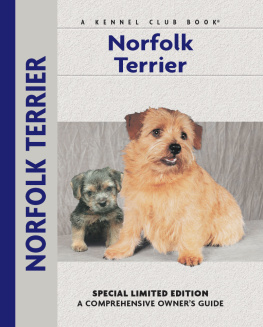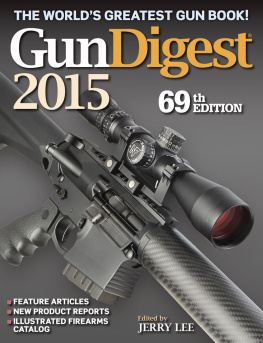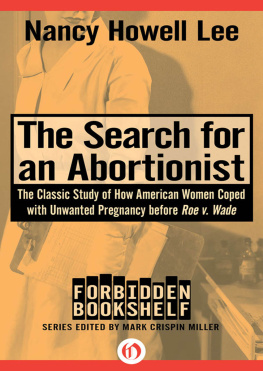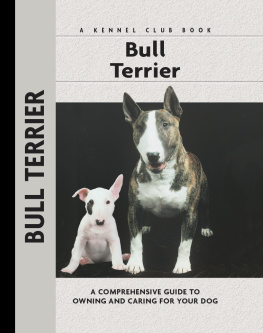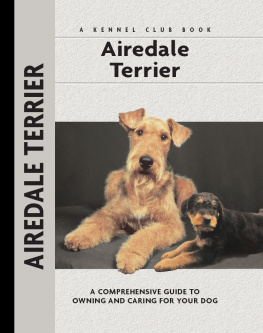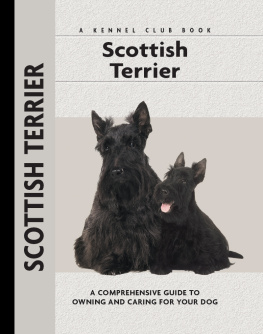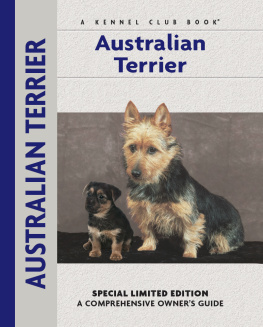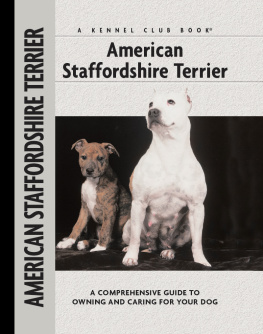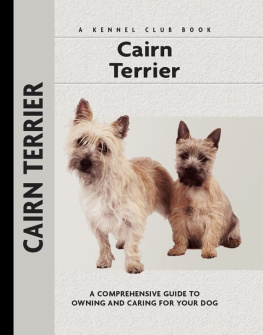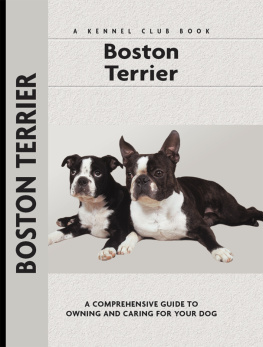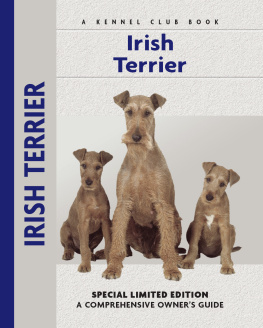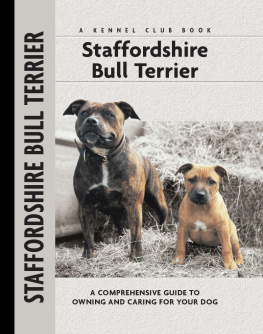Physical Characteristics of the Norfolk Terrier
(from the American Kennel Club breed standard )
Skull: Wide, slightly rounded.
Ears: V-shaped, slightly rounded at the tip, smooth and velvety to the touch.
Eyes: Small, dark and oval, with black rims.

Muzzle: Strong and wedge shaped.
Jaw: Clean and strong.
Neck: Of medium length, strong and blending into well laid back shoulders.
Forequarters: Well laid back shoulders. Elbows close to ribs. Short, powerful legs, as straight as is consistent with the digging terrier. Pasterns firm. Feet round, pads thick, with strong, black nails.
Height: At the withers 9 to 10 inches at maturity.
Weight: 11 to 12 pounds or that which is suitable for each individual dogs structure and balance.
Tail: Medium docked, of sufficient length to ensure a balanced outline.
Hindquarters: Broad with strong, muscular thighs. Good turn of stifle. Hocks well let down and straight when viewed from the rear. Feet as in front.
Coat: The protective coat is hard, wiry and straight, about 1.5 to 2 inches long, lying close to the body, with a definite undercoat.
Color: All shades of red, wheaten, black and tan, or grizzle.
Ribs: Well sprung, chest moderately deep.

Contents

Trace the origin of this new terrier breed back to the mid-19th century and meet the dominating British band of earthdogs whence it came. Meet the foundation dogs and breeders and watch the Norfolk Terrier conquer the UK, the US and beyond.

Discover whether this wonderful little dog is the terrier for you. The Norfolk Terrier excels as a companion and house dog as well as a working dog and requires an outgoing, active owner to keep up with his jaunty ways. Discuss the personality, physical needs and breed-specific health traits of which every prospective owner must be aware.

Learn the requirements of a well-bred Norfolk Terrier by studying the description of the breed set forth in the American Kennel Club standard. Both show dogs and pets must possess key characteristics as outlined in the breed standard.

Find out about how to locate a well-bred Norfolk Terrier puppy. Discover which questions to ask the breeder and what to expect when visiting the litter. Prepare for your puppy-accessory shopping spree. Also discussed are home safety, the first trip to the vet, socialization and solving basic puppy problems.

Cover the specifics of taking care of your Norfolk Terrier every day: feeding for all life stages; grooming, including coat care, ears, eyes, nails and bathing; and exercise needs. Also discussed are dog ID and safe travel with your pet.

Begin with the basics of training the puppy and adult dog. Learn the principles of house-training the Norfolk Terrier, including the use of crates and basic scent instincts. Get started by introducing the pup to his collar and leash and progress to the basic commands. Find out about obedience classes and training for other activities.

By Lowell Ackerman DVM, DACVD
Become your dogs healthcare advocate and a well-educated canine keeper. Select a skilled and able veterinarian. Discuss pet insurance, vaccinations and infectious diseases, the neuter/spay decision and a sensible, effective plan for parasite control, including fleas, ticks and worms.

Step into the center ring and find out about the world of showing pure-bred dogs. Acquaint yourself with the basics of AKC conformation showing, including how shows are organized and whats required for your dog to become a champion. Take a leap into the realms of obedience trials, agility trials, tracking tests and earthdog events.

Analyze the canine mind to understand what makes your Norfolk Terrier tick. Learn how to identify and deal with behavioral problems, including separation anxiety, digging, different types of aggression, sex-related issues, chewing, jumping up and barking.
K ENNEL C LUB B OOKS N ORFOLK T ERRIER
ISBN 13: 978-1-59378-278-8
eISBN 13: 978-1-62187-014-2
Copyright 2009 Kennel Club Books An Imprint of I-5 Press A Division of I-5 Publishing, LLC
3 Burroughs, Irvine, CA 92618 USA
Cover Design Patented: US 6,435,559 B2 Printed in South Korea
All rights reserved. No part of this book may be reproduced in any form, by photostat, scanner, microfilm, xerography or any other means, or incorporated into any information retrieval system, electronic or mechanical, without the written permission of the copyright owner.
10 9 8 7 6 5 4 3 2
Photography by Michael Trafford
with additional photographs by:
John Ashbey, Mary Bloom, Kim Booth, Paulette Braun, Tom Bruni, Alan and Sandy Carey, Isabelle Franais, David Gossett, Carol Ann Johnson, Bill Jonas, Laurie Rossi-Sherick and Alice van Kempen.
Illustrations by Rene Low and Patricia Peters.
The publisher wishes to thank all of the owners whose dogs are illustrated in this book, including Ann Clayton and George and Mary Rzeszutek.

Lovable and alert, with a dash of terrier mischief, the Norfolk Terrier came to prominence in the 20th century.

The origin of the Norfolk Terrier dates back to the 1880s. He belongs to the group of dogs described as terriers, from the Latin word terra, meaning earth. The terrier is a type of dog that has been bred to work beneath the ground to drive out small and large vermin, rodents and other animals that can be a nuisance to rural life.
Most of the dogs classified as terriers by the worlds kennel clubs originated in the British Isles. Even the Cesky Terrier, which claims the former Czechoslovakia as its homeland, arguably derives from British breeds. Many of the terrier breeds were derived from a similar ancestor and, as recently as the mid-1800s, the terriers fell roughly into two basic groups: the rough-coated, short-legged dogs of Scotland and the longer-legged, smooth-coated dogs of England. Of course, the Norfolk Terrier, although he surely is a short-legged breed, belongs to the English group of dogs.
The Norfolk was originally recognized under the name Norwich. Today they are two separate breeds, the Norfolk Terrier and the Norwich Terrier. They are very similar, with the most marked difference being the ear carriage; the Norwich carries the prick ear and the Norfolk has the drop ear. There are further differences in these two breeds, which will be mentioned in more depth later.
Next page
